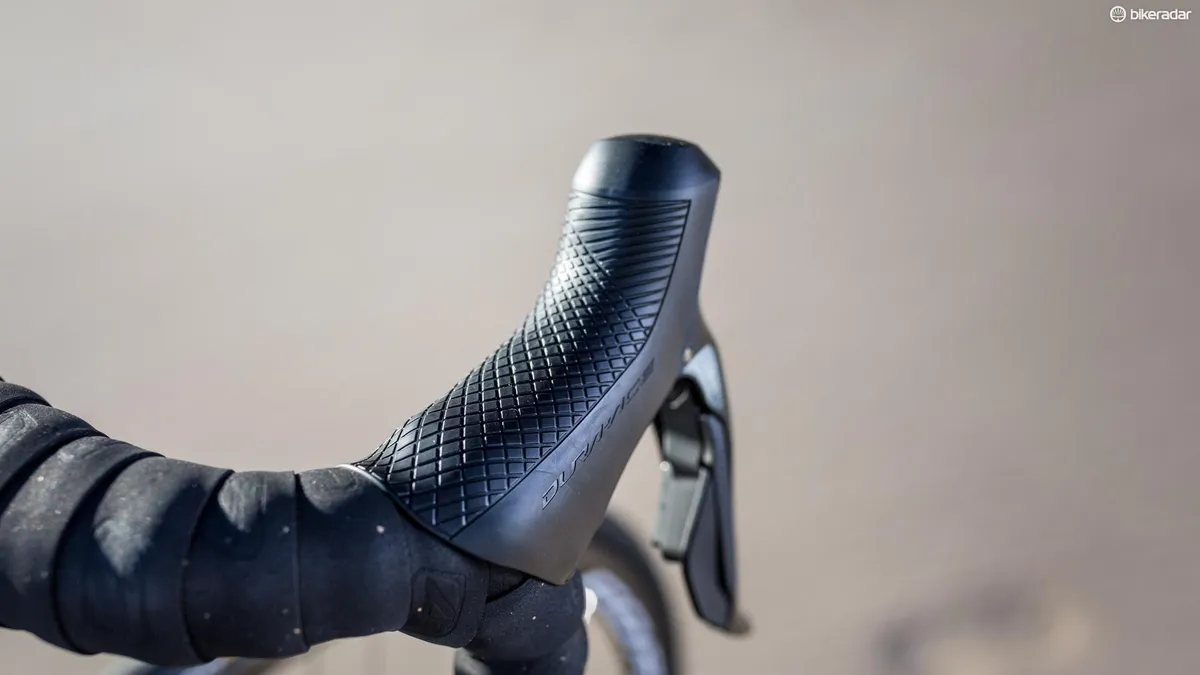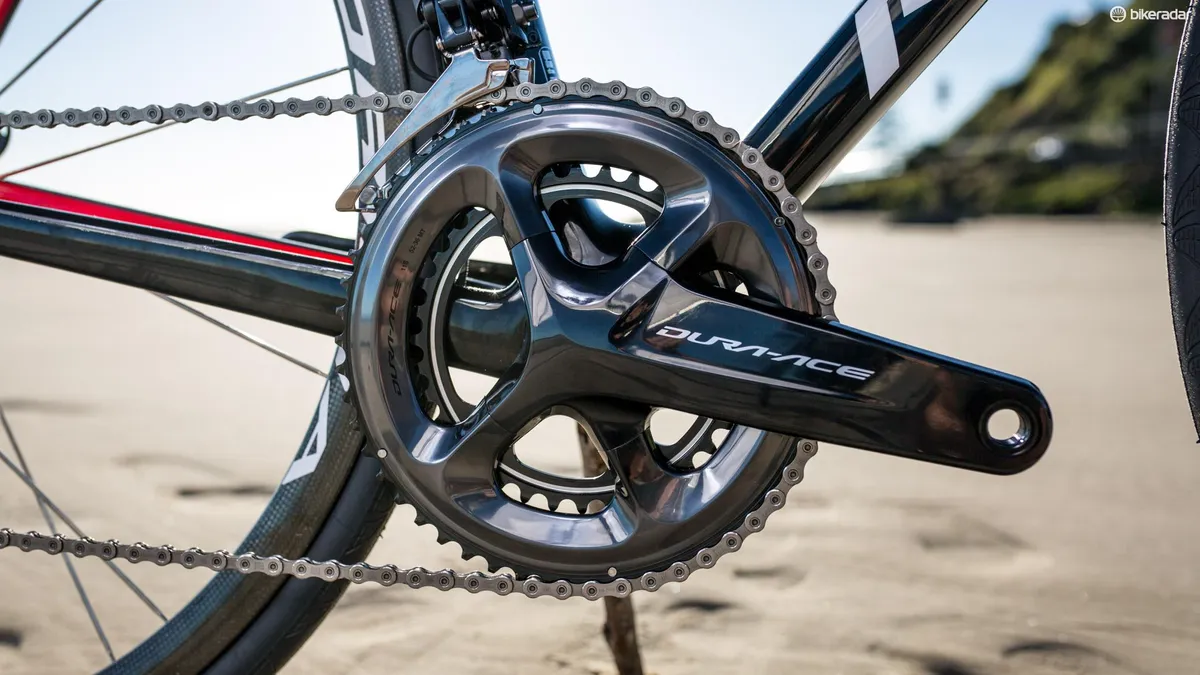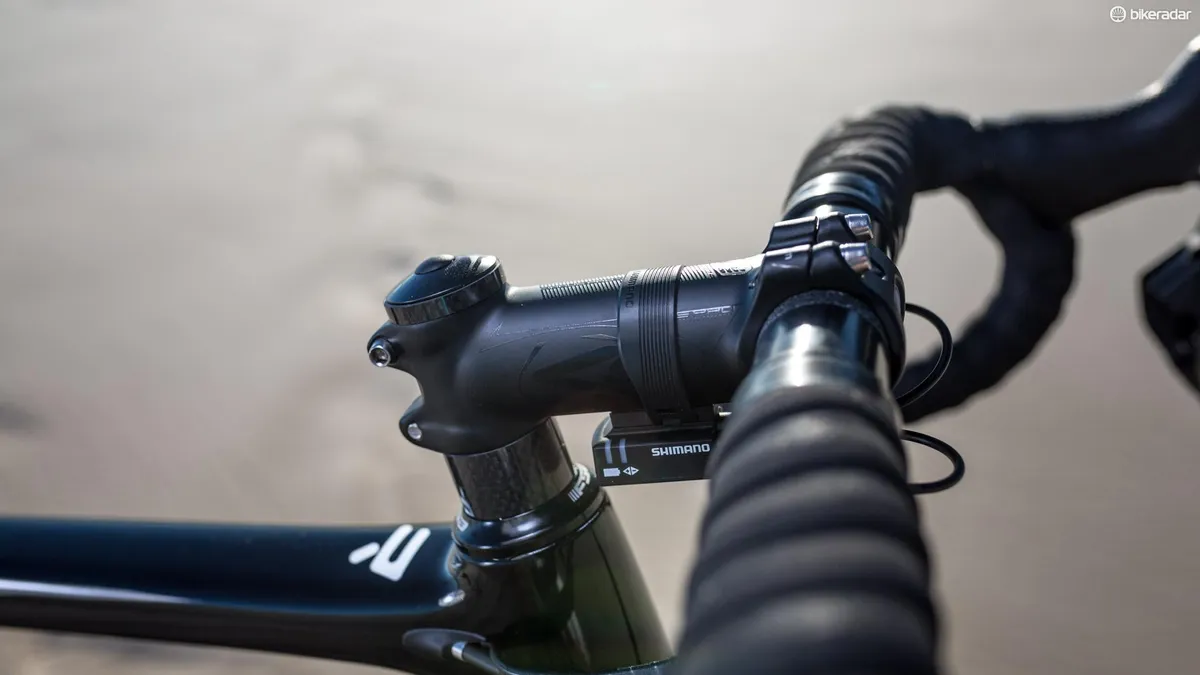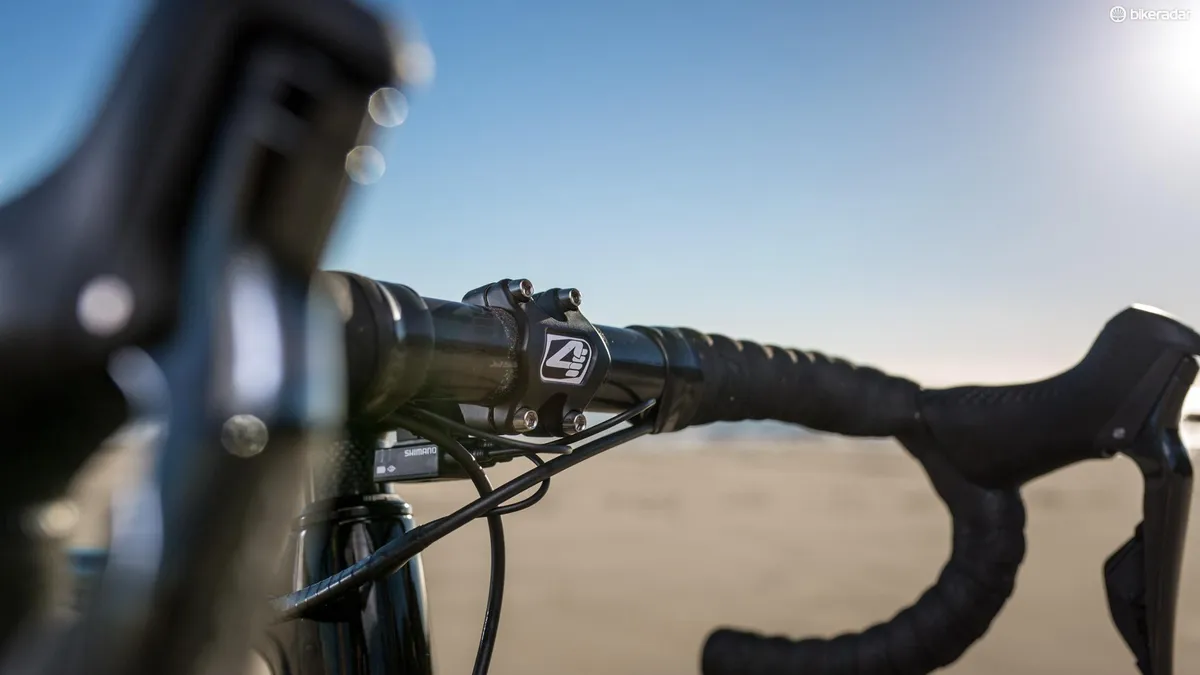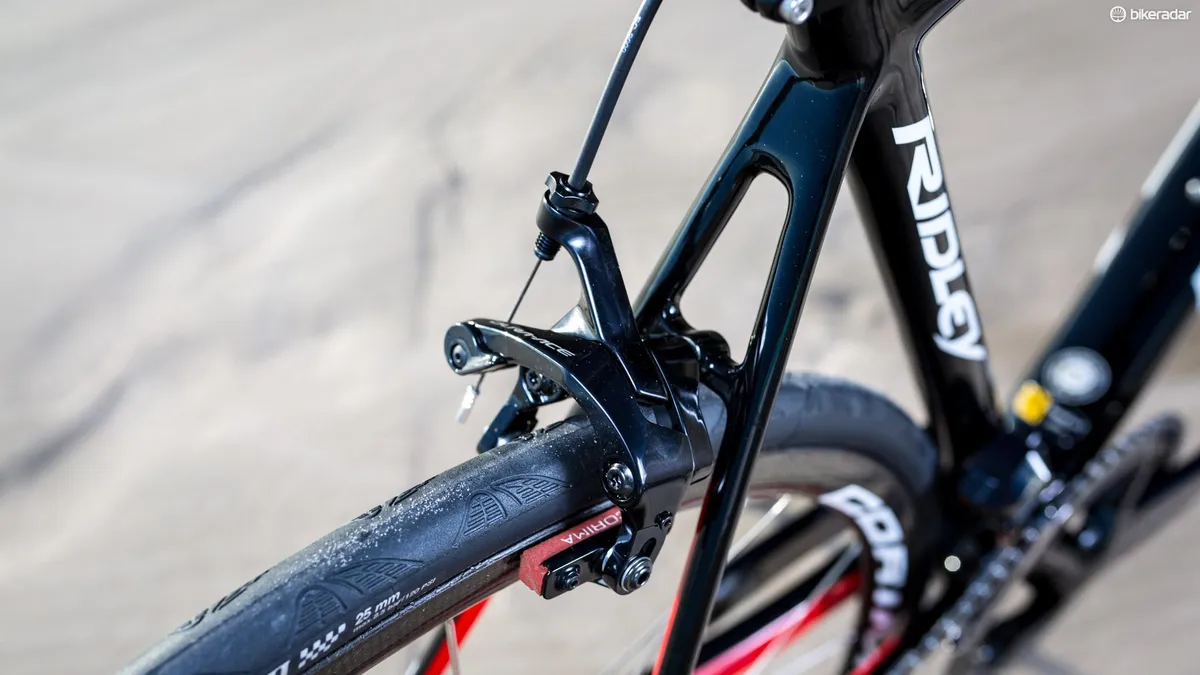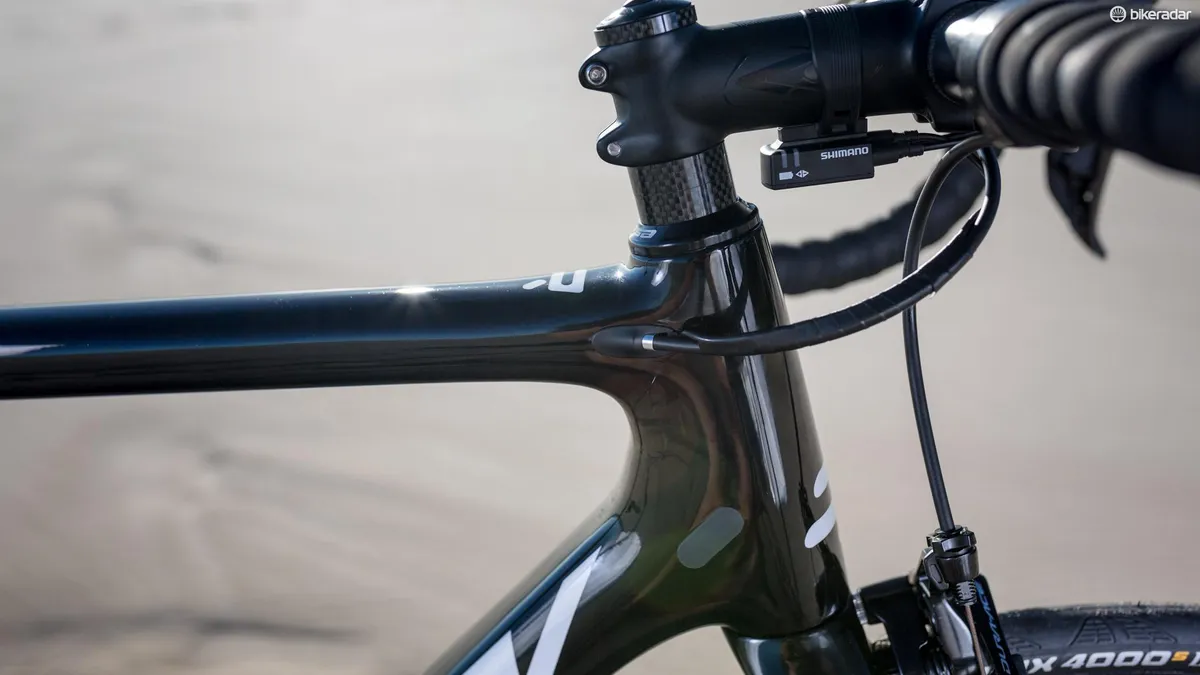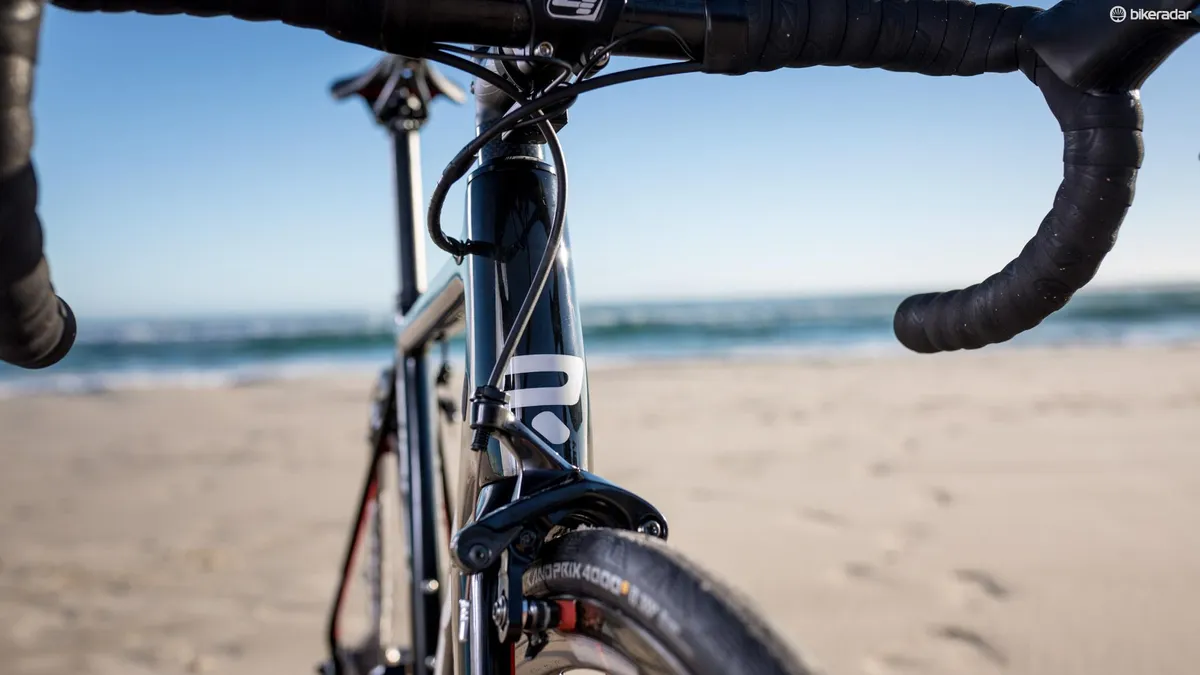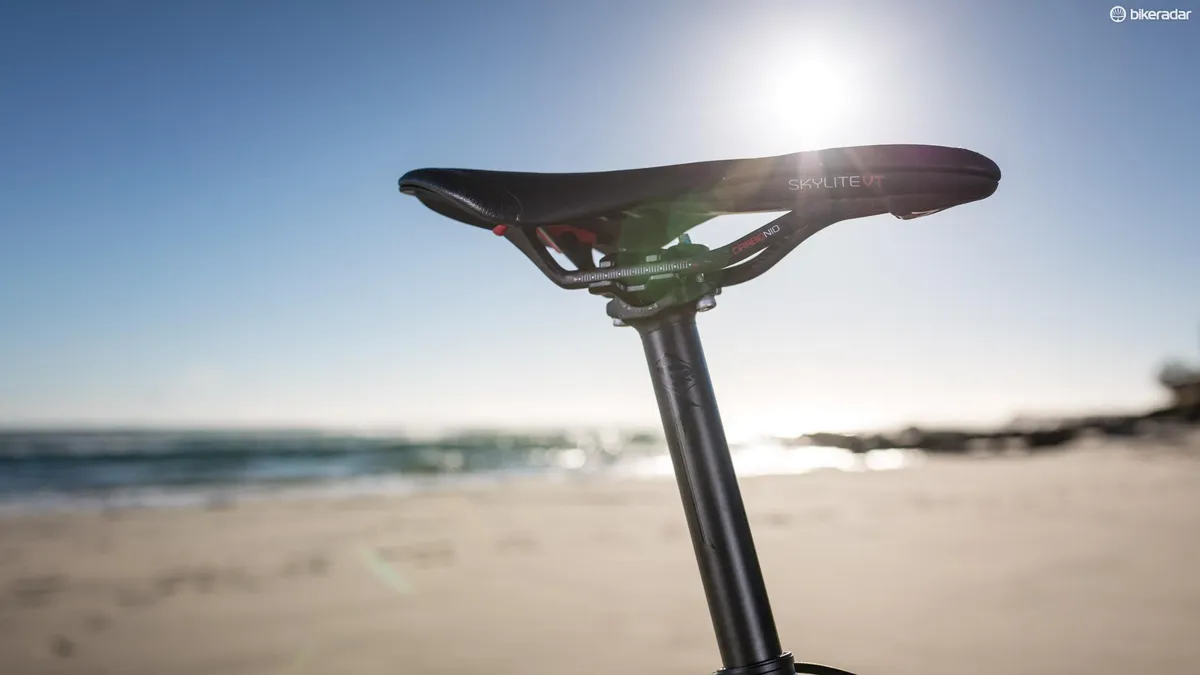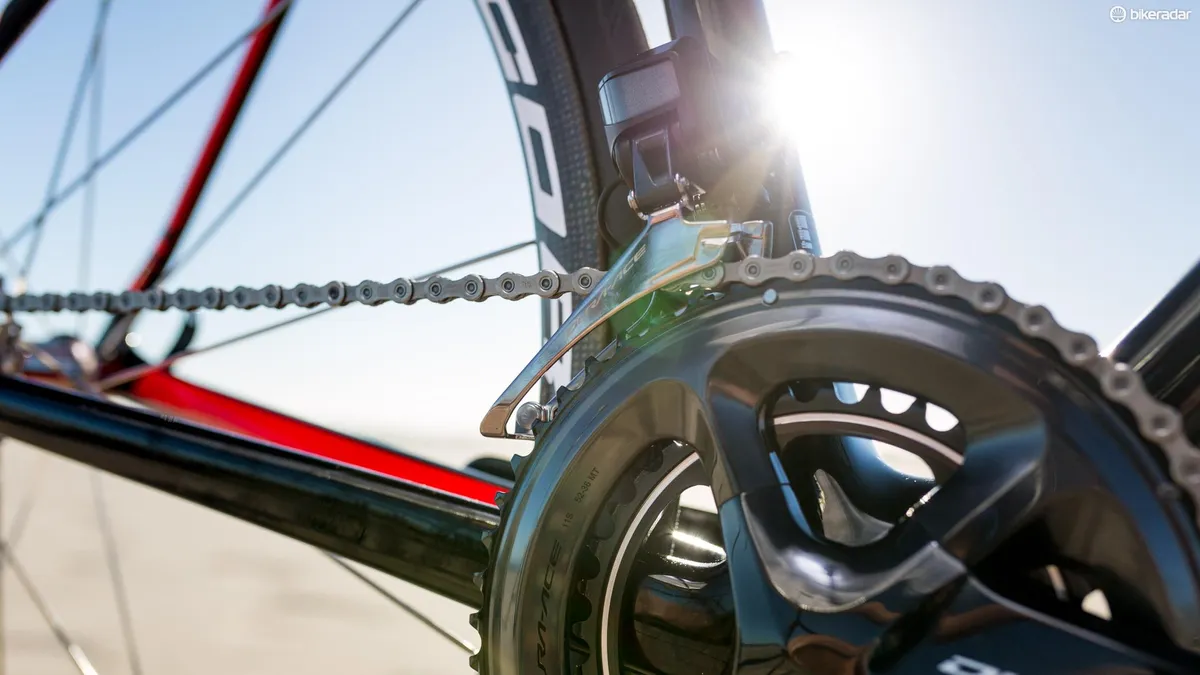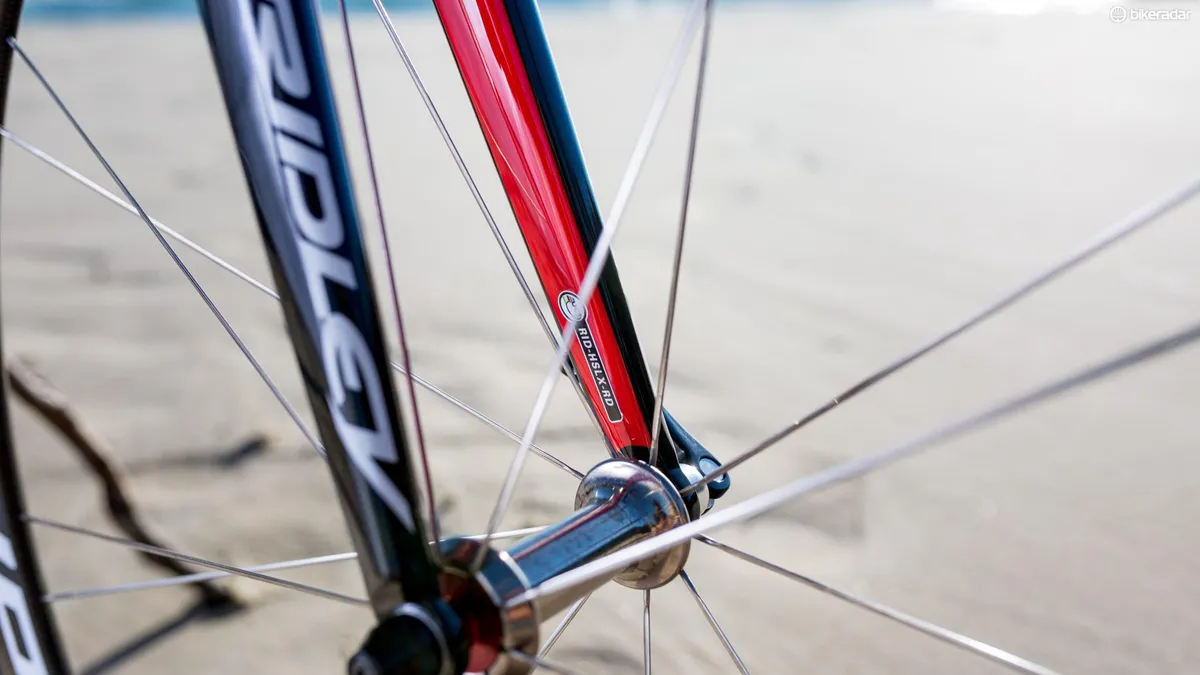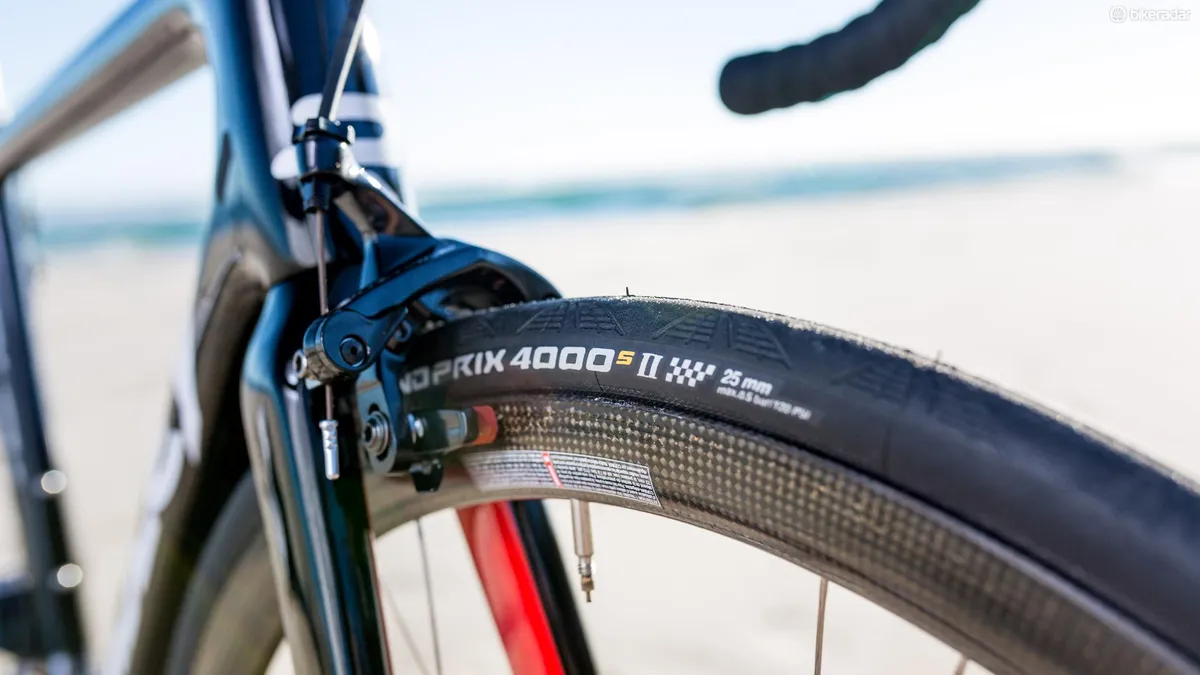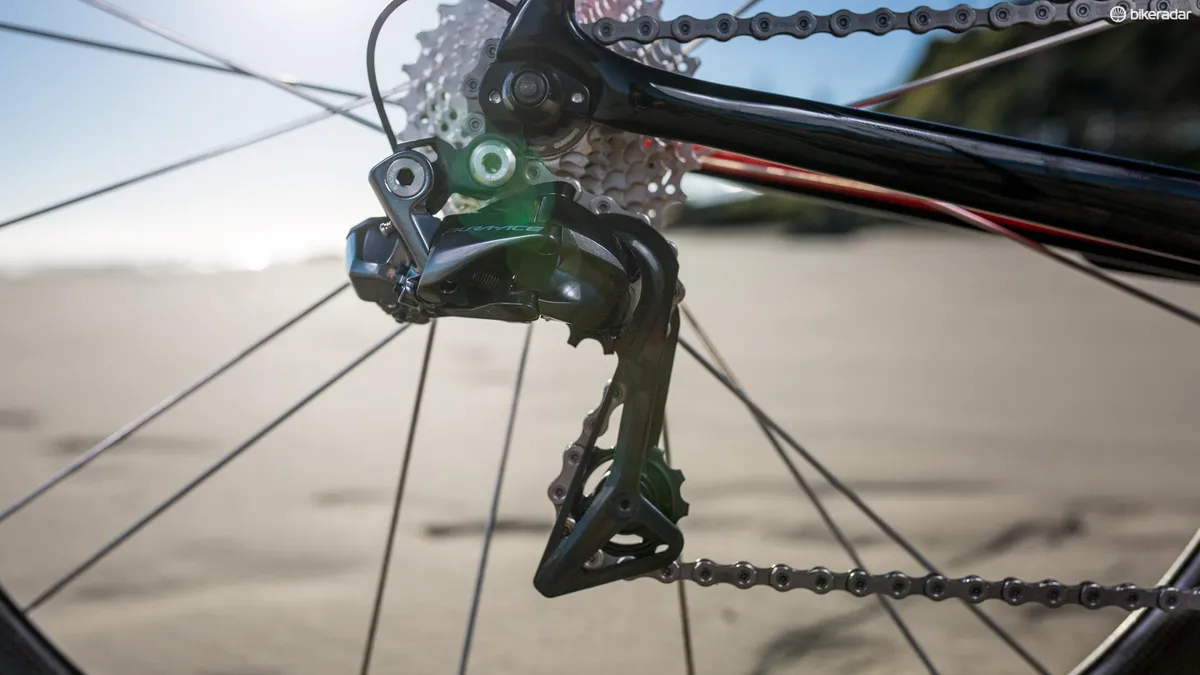From the get go I knew the out-of-the-box build on my long-term Ridley Helium SLX was going to be tough to improve on, with full Shimano Dura-Ace Di2 and Corima Carbon wheels, it’s a dream bike.
When it comes to this bike I’m not chasing a ridiculously low weight racing build like BikeRadar's climber extraordinaire Joe. For me, it's more about smaller, nuanced changes to contact points and certain components to personalise this fantastic bike.
Longer and lower
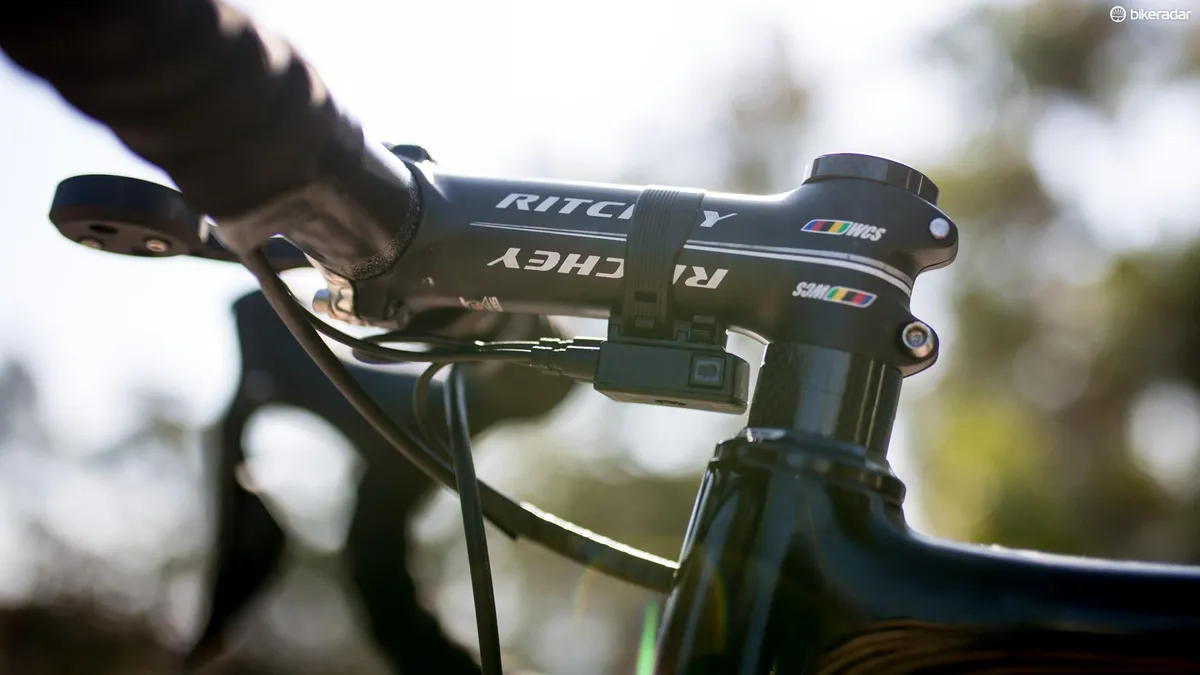
When it comes to bike fits I prefer a 55cm top tube and a long stem, and because my torso is longer than my legs, a 56cm frame always feels too big. The top tube on this Ridley measures 54.5cm — close, but it still felt short.
The solution: a 120mm Ritchey 4-Axis WCS stem. This came off one of my personal bikes and it offered just the right amount of extra length.
A side effect of lengthening the reach is slower handling. So far it’s hardly noticeable, but this alteration was made recently so it may be too early to tell. I'm also planning to get rid of a spacer from underneath the stem, but I'm getting ahead of myself — one change at a time.
Something that came as a bit of a surprise was how much stiffer the Ritchey stem is than the standard 4ZA 100mm alloy stem. The 4-Axis WCS is known for being stiff, but the difference is night and day!
The saddle

My initial impression of the Astute Skylite VT that came with the bike was ‘meh’ and I was planning to swap it for a Specialized Romin. Before I could, however, Astute contacted me and asked if I'd like to try its Star road saddle. The Skylite is a flat saddle, while the Star has a round shell, which the folks at Astute thought might be a better fit.
Besides its rounded profile, the Star's shape is very similar to Astute's Mud saddle, which currently serves as the perch on all my mountain bikes, both personal and test machines.
A bike fitter once told me the search for the right saddle is a never-ending battle and once you find a shape you like you should stick with it. The Star has a round shell, a pressure-relieving cutout and memory foam padding that’s firm and supportive at the back but gets progressively softer towards the nose.
The Star's profile is quite also similar to the Romin — the tail on the Star doesn't kick up quick as much and the nose is a bit narrower, but the shape is almost identical. I plan to swap between them a few times to see how they compare, but for the time being the Star is working for me.
Italian rubber
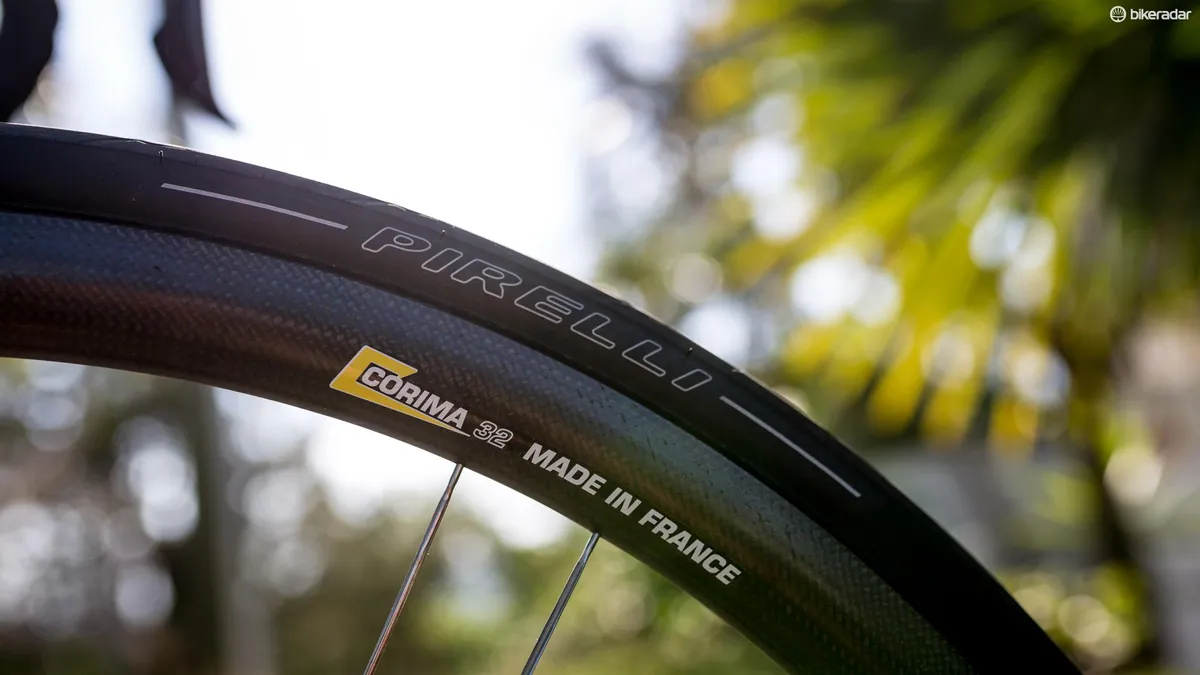
And if this build couldn’t get any more dreamy, I’ve also got my hands on a set of Pirelli’s new PZero Velo tyres. The 25c rubber pairs nicely with the Corima Carbon 32 wheels and at 210g they're 5g lighter than the Conti GP 4000S II I’d been using.
I haven’t had the Pirelli tyres near long enough to comment on durability, but they sure do roll well.
Pirelli’s Super Silica compound is very techy and the brand makes big claims about wet-weather performance. Lucky for me, it doesn’t rain too often here on the Gold Coast so I haven’t had them out in the wet as of yet. But, the Gold Coast does have its fair share of rough roads, and the grip and comfort on far-from-pristine pavement is top notch.
Are the Pirellis better than a Conti GP 4000 or a Michelin Power? It’s too early to say.
Miles this month
- 673.37 miles / 1,083.68km
Costs this month
- Pirelli PZero Velo 700 x 25c: £39.99 / $TBC / AU$69
- Astute Star: £TBC / $TBC / AU$375
- Ritchey WCS 4-Axis stem: £75 / $89.95 / AU119.85
Original post 3 August, 2017
My first exposure to the Ridley Helium SLX was at the bike's launch at this year's Tour Down Under in January. The local guys from Ridley brought in a few Lotto-Soudal riders, namely Thomas De Ghent and Adam Hansen, to give us their impressions of the bike, as they’d been riding it for a few months already.
- Norco Search Alloy 105 Hydro long-term review
- Fuji SL 1.5 2017 long-term review
- Bianchi Methanol 9.5 CV long-term review
It was here that Hansen said, point blank, to a room full of journalists and retailers, “the new Helium (SLX) is the best bike I have ever ridden.”
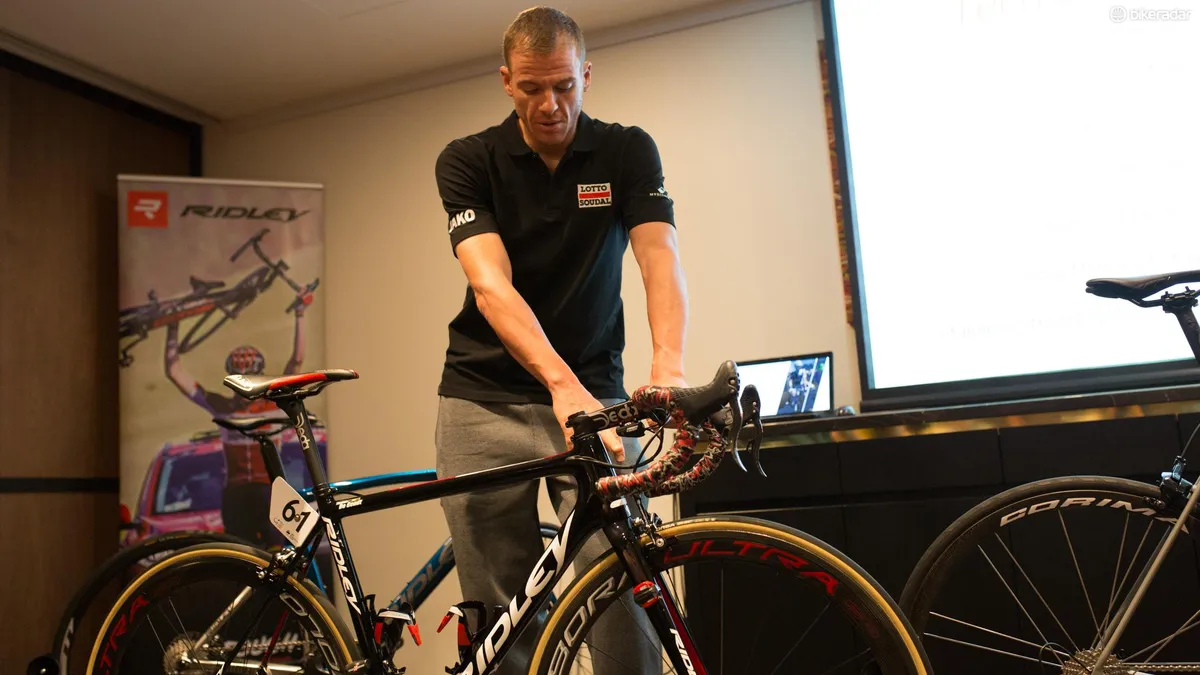
- This review is part of our new long-term test format on BikeRadar where staffers, like me, will be introducing the bikes we're spending time on over the next few months. We’ve already seen Jack's Bianchi Methanol, Oli’s Norco Search Alloy and had a brief look at Joe’s Fuji SL 1.5. Be sure to keep checking back here for regular updates.
He then went on to explain the physics of why early disc frames broke the way they did, quote exact weights of disc brake groupsets off the top of his head and answer some pretty technical questions when it came to certain design elements of another Ridley launched on the day.
Given he also makes his own custom carbon-fibre shoes and tinkers with bike fit and set-up like nobody else in the pro peloton, dude knows gear.
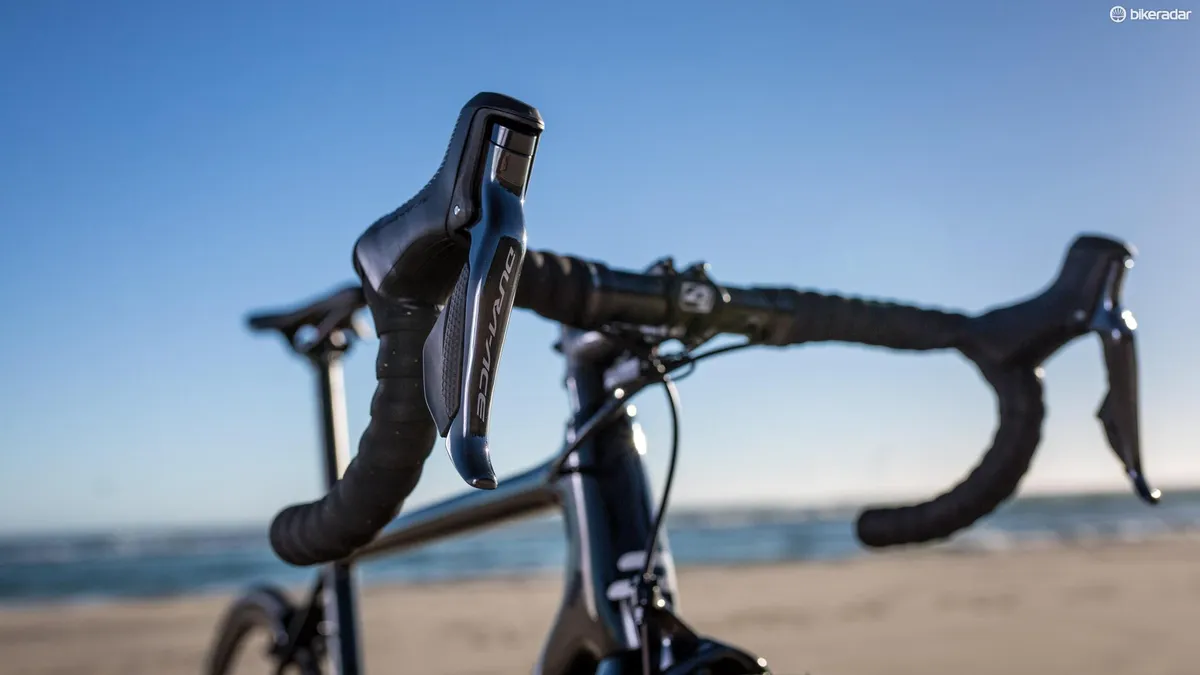
Yes, I realise he's a sponsored athlete and is supposed to say, X, Y and Z are the best he’s ever ridden, but with the amount of black electrical tape and magic marker used on his race bikes to appease sponsors, I actually put quite a lot of stock into what Hansen has to say when it comes to equipment.
Needless to say, I was intrigued, and when the local Ridley distributor asked if I’d like to borrow one for review I jumped at the opportunity. This was made sweeter when the build was outlined – more on that later.
With so many bike brands touting their frames as the lightest and stiffest, the Ridley doesn't really tick many of these boxes. With a 750g frame and 300g fork, it’s far from the featheriest out there (though the local Ridley distributor points out 750g is the weight of a painted frame) and it’s also not the stiffest. But in my short time aboard the Belgian beauty it rides pretty damn well!
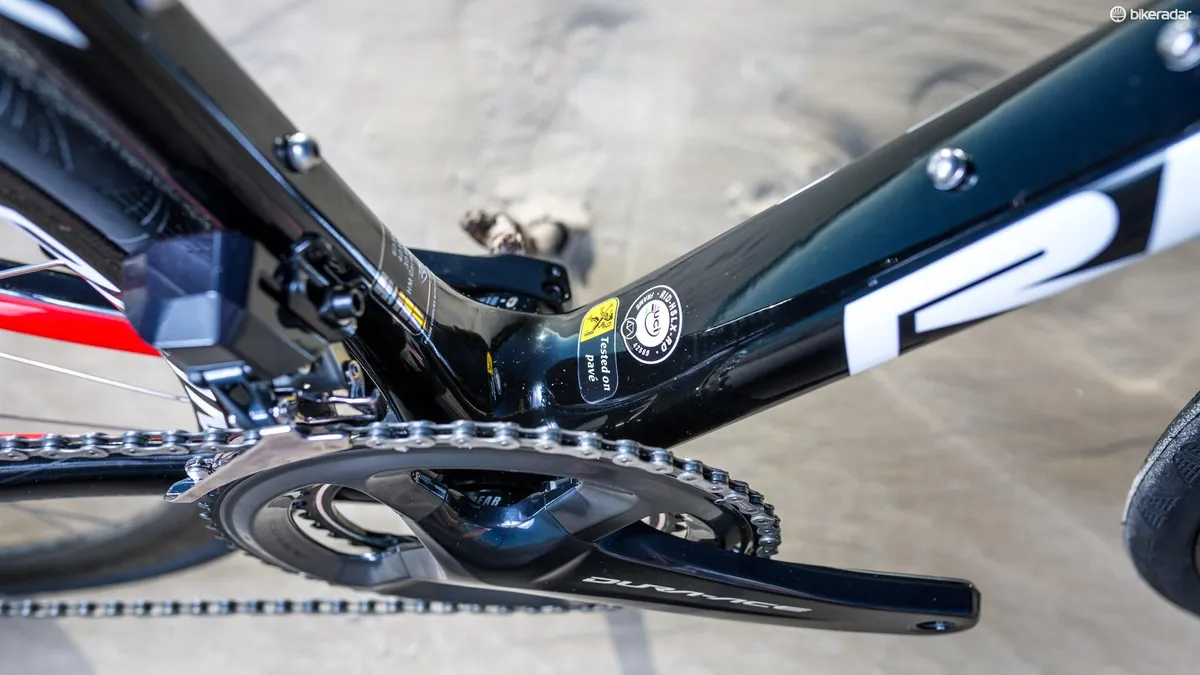
One of the first things I noticed about the Helium was how comfortable it is. My inaugural ride was in Byron Bay, a small coastal town in northern NSW, where the road surface is far from smooth.
On the bottom bracket shell, there's a little sticker that says tested on Pave, and I fully believe it. So far the Helium SLX has proved to be a comfy frame, without needing mechanical pivots or bouncy bits.
In spite of its plush nature it still rides like a race bike and after a few hundred miles I can confidently say the accelerations are quick and the handling is razor sharp and confident. It’s definitely a lightweight bike and changes in speed are effortless, while the stiff bottom bracket doesn’t waste any energy from the cranks through flexing.
Laterally it’s quite stiff and in the saddle there are no signs of the frame twisting or wheel rub at either end. That said it’s rare my 155lb / 70kg frame can get a high-end race bike to bend this way.
Making it my own
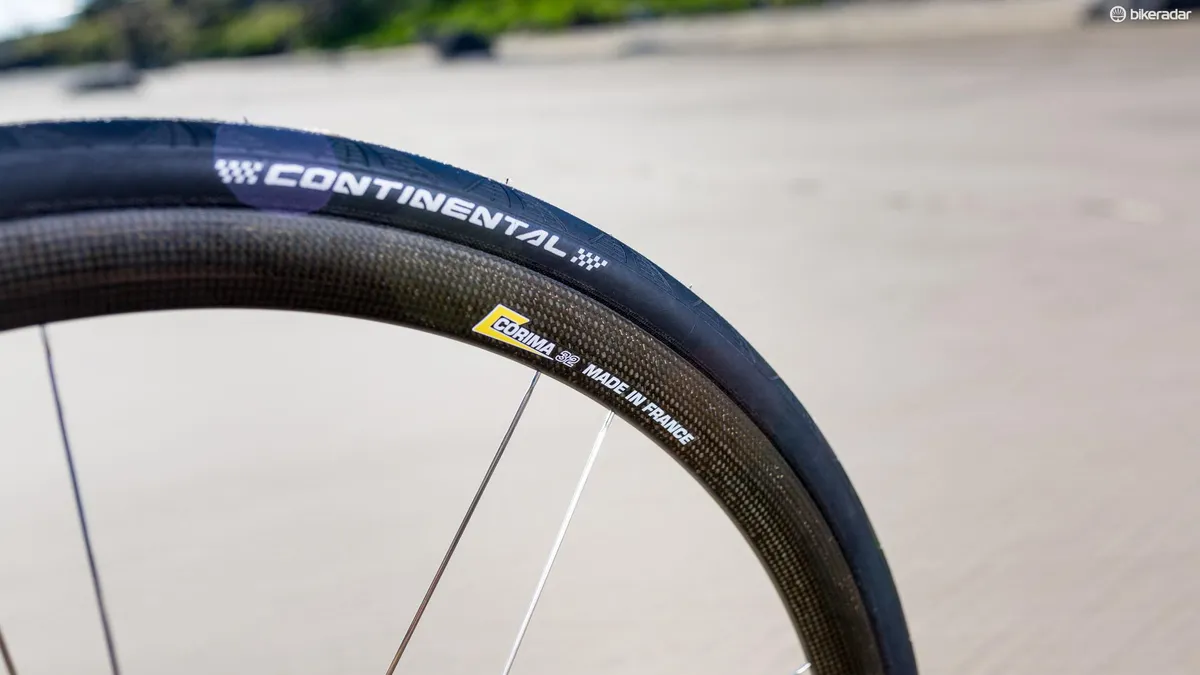
To be frank, it’s quite tough to improve on this bike as it came with a pretty much dream spec. The drivetrain is Shimano’s latest Dura-Ace Di2 R9150 from top to bottom and it rolls on Corima Carbon 32 clinchers with Continental Grand Prix 4000 II rubber.
The bar, stem and seatpost are carbon and come from Ridley’s in-house brand 4ZA, which is as good as anything on offer from the aftermarket brands when it comes to quality. That said, I don’t love the bend on the 4ZA Cirrus Pro bars and may swap to something with a bit more drop.
When it comes to the seating arrangements my hindquarters are quite particular about saddles, and thus far my opinion of the Astute Skylite VT which came on the bike is decidedly, meh. I don’t love it, I also don’t hate it, though I’m planning to swap for a Specialized Romin.
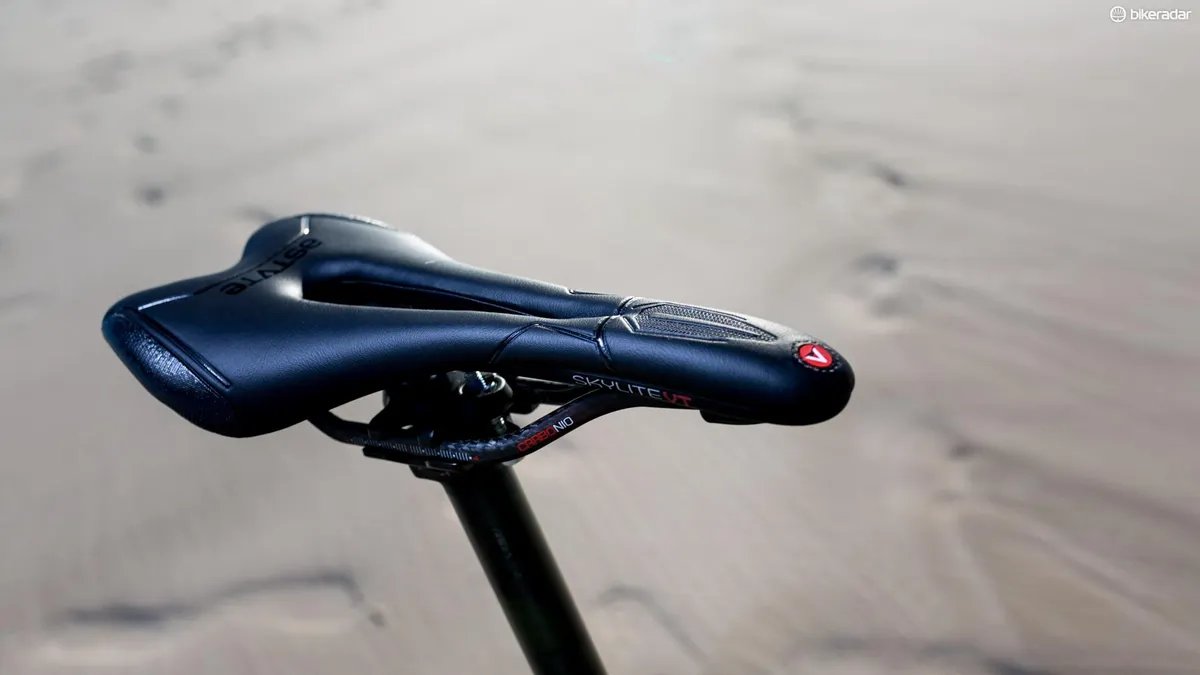
I also plan to swap the brakes around from the UK/Australian style to the American way. Over the years I’ve had to learn how to ride with my brakes backwards on the vast majority of test bikes that have come through, but since I’ve got this one for a while, why not make it the way I like it.
The bike has been finished with two Blackburn Camber carbon bottle cages from a million years ago, a set of Speedplay pedals and a K-Edge Race Mount for Wahoo computers.
This brings my Ridley Helium SLX to a weight of 6.7kg.
Make sure to check back to see how my new Belgian friend and I are getting along.
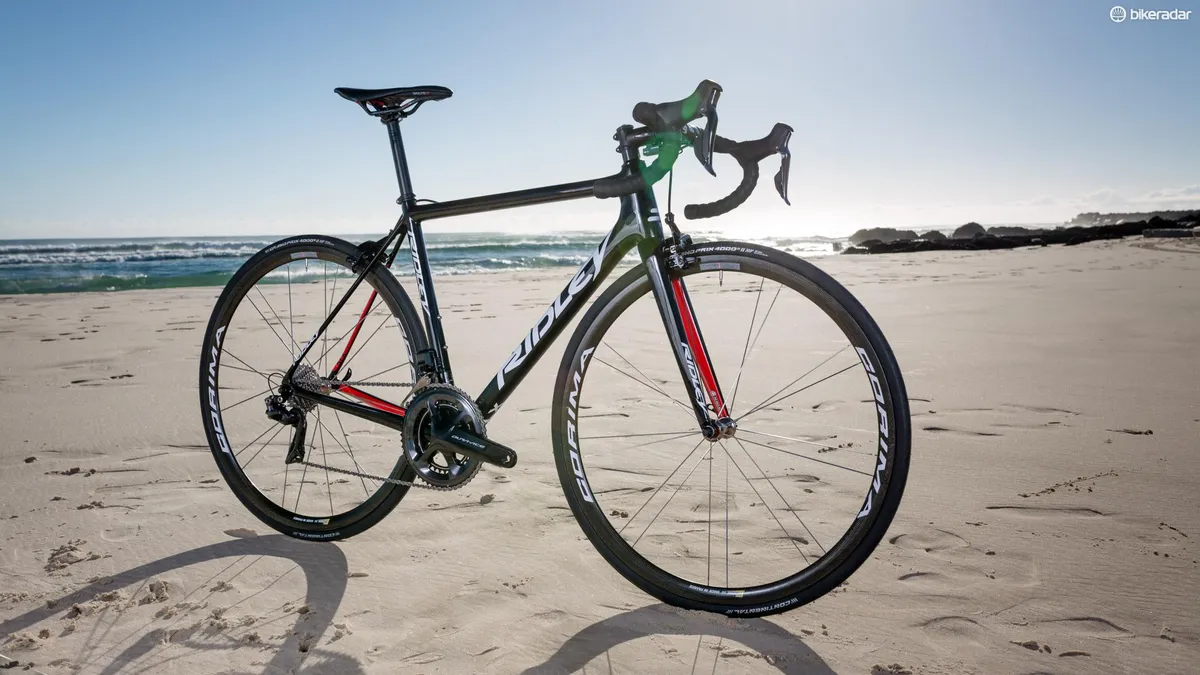
Mileage this month
200miles / 410km
Costs this month
None yet, a few component swaps to come
Ridley Helium SLX specifications
- Frame: Helium SLX, 60T-40T-30T HM unidirectional carbon
- Fork: Helium SLX, 60T-40T-30T HM unidirectional carbon
- Crankset: Shimano Dura Ace R9100 53/36
- Bottom bracket: C-Bear Ceramic
- Front derailleur: Shimano Dura-Ace R9150 Di2
- Rear derailleur: Shimano Dura-Ace R9150 Di2
- Shifters: Shimano Dura-Ace R9150 Di2
- Brakes: Shimano Dura-Ace R9100
- Wheelset: Corima Carbon 32
- Tyres: Continental Grand-Prix 4000II, 700 x 25cc, 150tpi, folding
- Handlebar: 4ZA Cirrus Pro
- Handlebar tape: 4ZA Cork
- Headset: FSA, 1 1/8in upper – 1 1/2in lower, integrated w/ carbon top cover
- Stem: 4ZA Cirrus Pro 100mm
- Seatpost: 4ZA Cirrus Pro 0-setback
- Saddle: Astute Skylite VT
- Weight (actual): 6.65kg/14.66lbs (without pedals)
